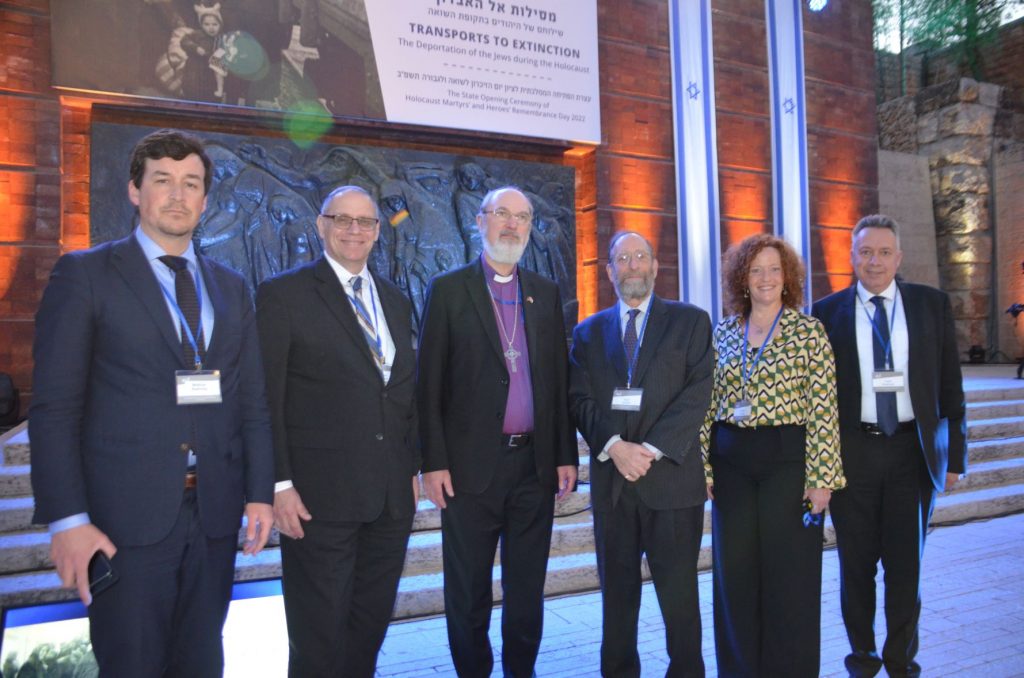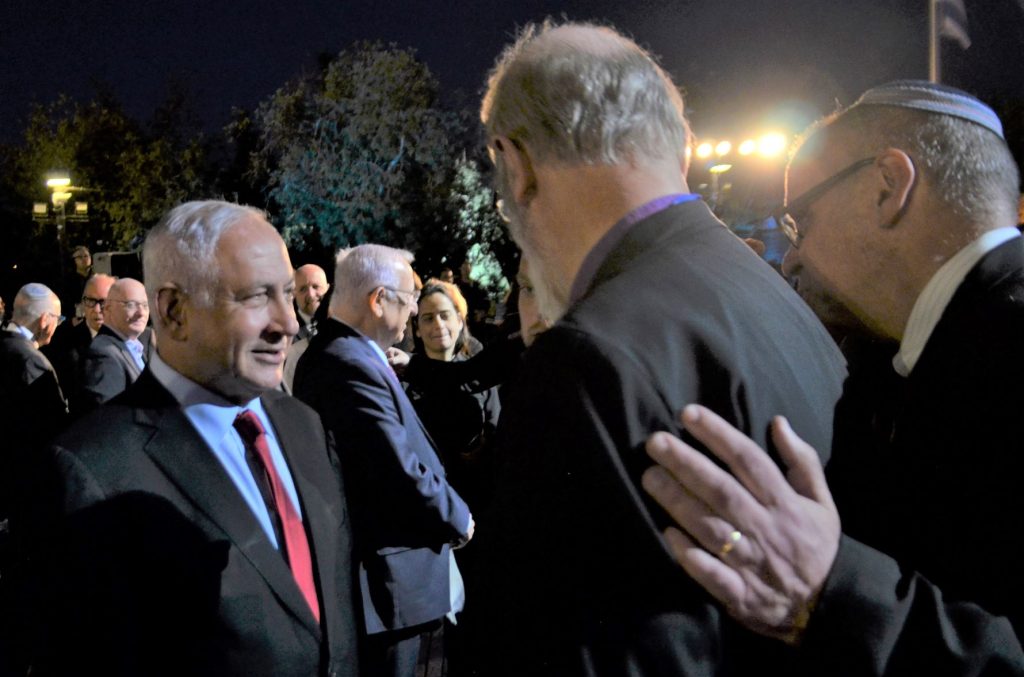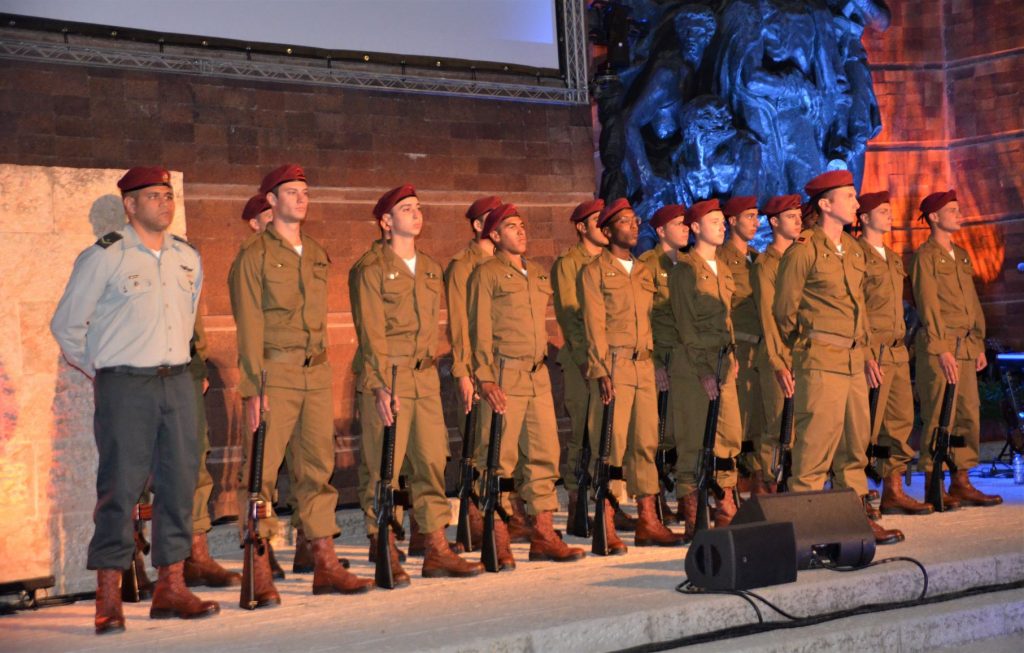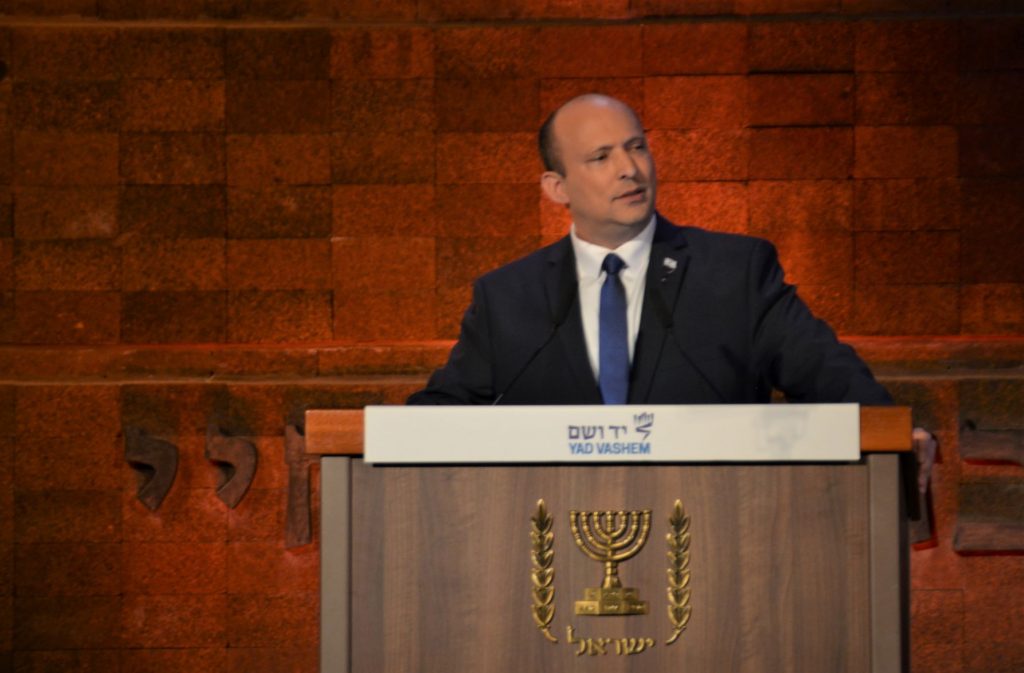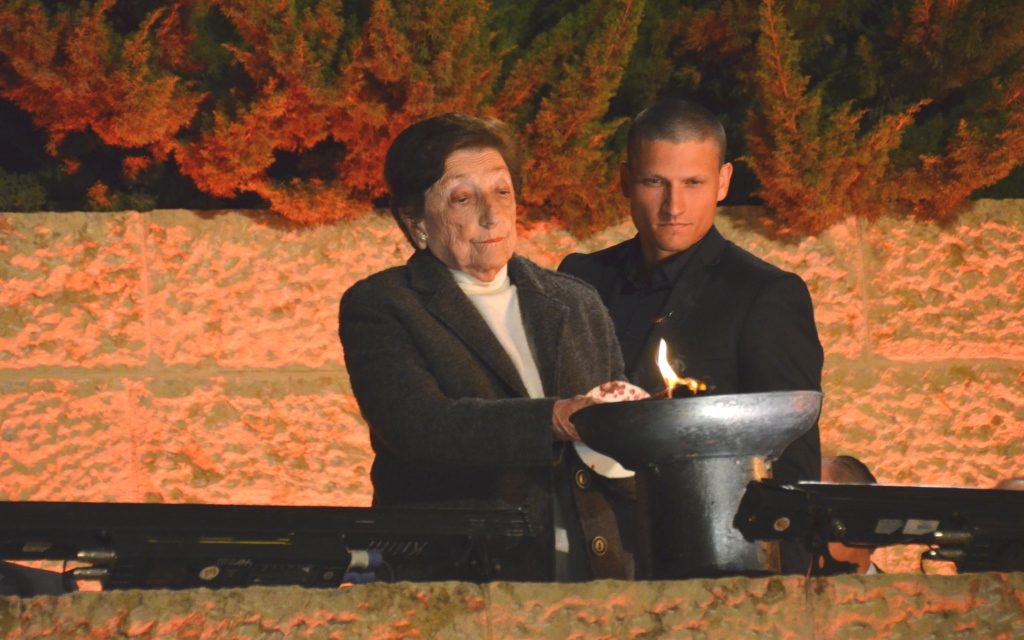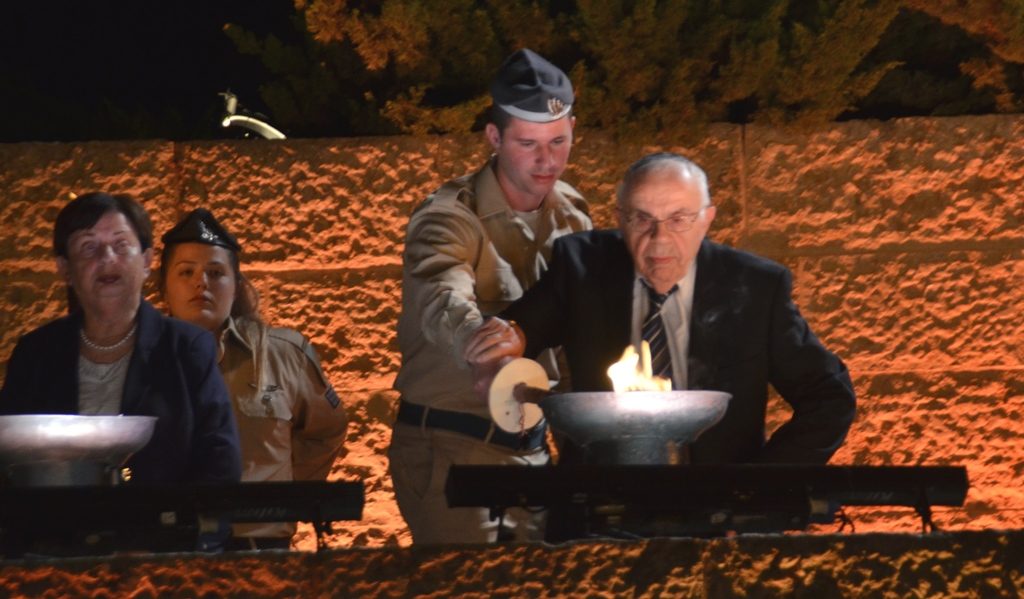As soon as Passover is over, the holiday preparations are well under way for celebrating the Yoms – Yom HaShoah, Yom HaZikaron, and Yom Haatzmaut in Jerusalem.
The Beit Hanasi, the Israeli President’s Residence, is the site of multiple activities for Remembrance and Independence Days each year.
To start off a week of memorial events, Sunday morning was at Beit Hanasi.

Entering through the front gate past security, the state symbol of a menorah surrounded by olive branches is ready for celebrations of Israel at 75.
Beit Hanasi has hosted a Zikaron Basalon gathering since the Rivlins first invited the neighbors to share the more intimate setting to hear the testimony of a survivor.
The social initiative has taken off over the years with tens of thousands participating in private homes and other small group venues.

This year arriving early, I got to watch Kobi Oz and Yonatan Raizel rehearse their song on the program, “Suddenly Breathing.”

The main room at Beit Hanasi was arranged with the President and Michal Herzog with the main speaker and his wife at the front.

Albert Chen (Hayon), a Holocaust survivor from Tunis, shared his personal story, accompanied by his wife Giselle.

The two famous Israeli musicians were a bonus not usually found at the Zikaron Basalon events.

Kobi Oz performed his song “We Didn’t Have Anything”, which he dedicated to his mother, as he began she motioned with her finger in the air in agreement.

It was a meaningful event, especially seeing the honor and respect Kobi Oz paid to his survivor mother. How to reach younger generations as survivors pass on is the question, and music is one answer being suggested and offered at this event.

The memorial flames are again on some public buildings.

The Israeli flags at Har Herzl Cemetery were already at half-mast as I went to Yad Vashem for the official state ceremony to open Yom HaShoah, Holocaust Martyrs’ and Heroes’ Remembrance Day. Which was observed on April 17 – 18, 2023, with thousands of events throughout Israel.

The theme this year was Jewish Resistance during the Holocaust, marking 80 years since the Warsaw Ghetto Uprising.
Each year I try to arrive early to get through the layers of security to get to the Warsaw Ghetto Plaza where the televised program is held.
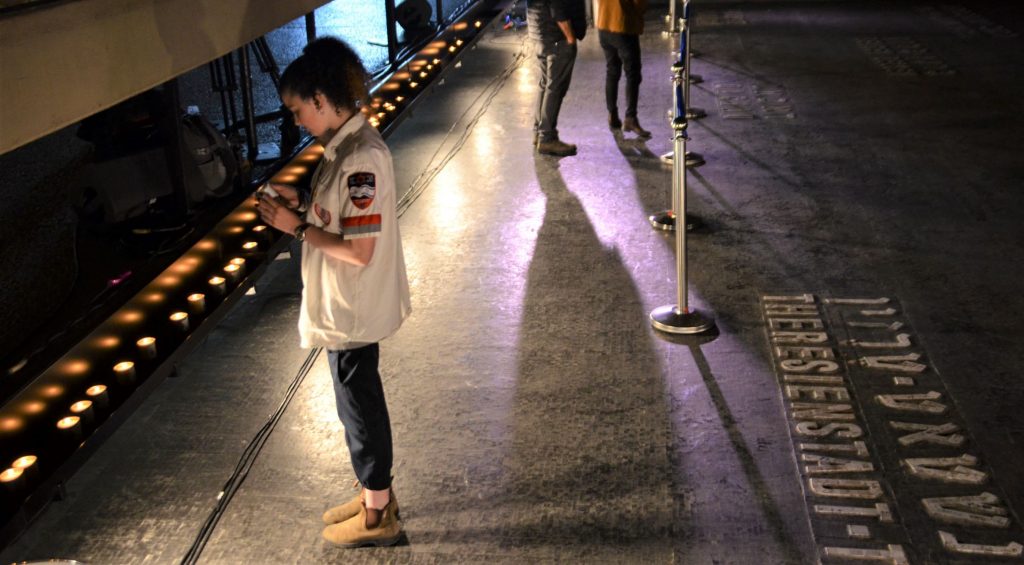
New this year there was the opportunity to light a memorial candle in the Hall of Remembrance before the start of the 8:00 pm program.

The room was surrounded by small flames from those candles as people slowly filed thru the large hall.

Chairs were set near the memorial flame to be used in the morning ceremony at Yad Vashem as the morning siren sounded.
A long list of dignitaries and Israeli government officials attend both ceremonies, as they do each year.

Special attention was given before the night program started to the arrival of Reza Pahlavi, the son of Iran’s former leader Shah Mohammad Reza Pahlavi, here with MK Gila Gamliel.
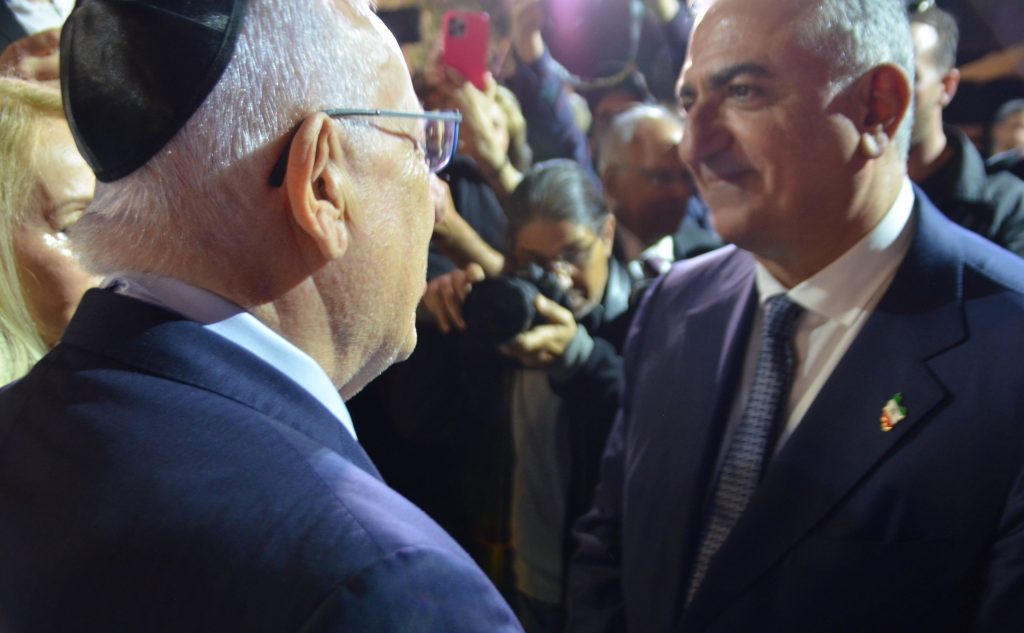
Former President Reuven Rivlin greeted Pahlavi and commented on how much he looked like his father whom he met in 1978.

New IDF Chief of Staff Halevi also captured the photographers’ attention as he entered and proceeded to his seat.
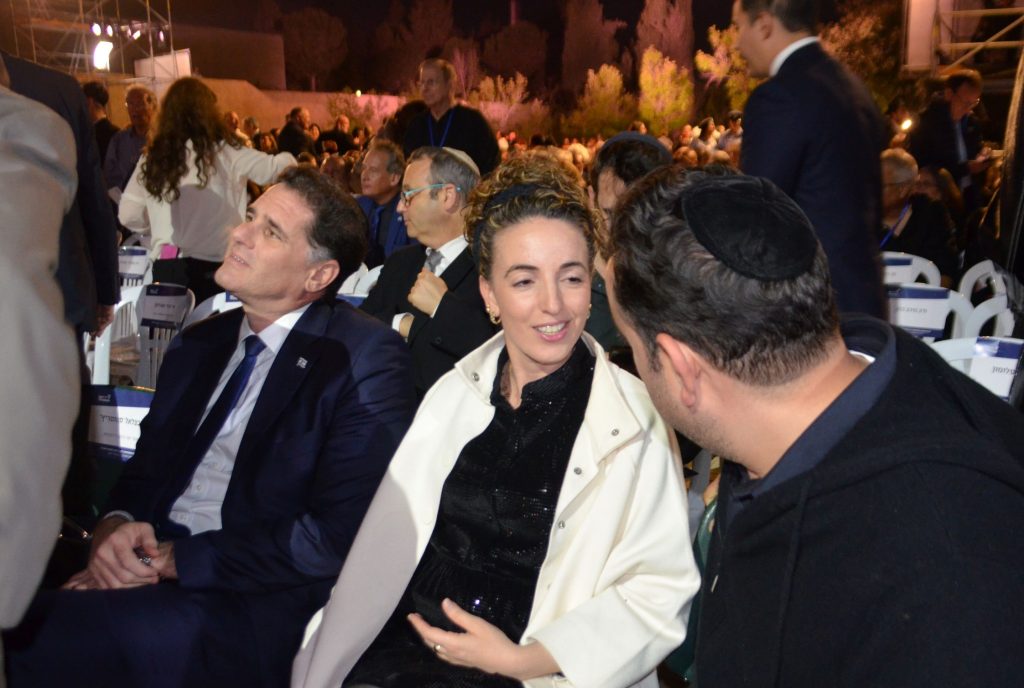
Government ministers are seated in the front row, while the crowd goes back to the very rear of the plaza with guests, soldiers, and youth leaders.

The Israeli President and Prime Minister spoke as they do each year. But there seemed to be more empty chairs in the first section, even though the weather was much warmer than usual.

The honor guard stood at attention. Once a soldier fainted, fell, and was replaced during a televised video segment. Not this time.
A highlight of the evening is the lighting of the six memorial flames.

During the ceremony, Holocaust survivors are honored to light six torches. This year’s survivors were: first torch – Tova Gutstein; second torch – Ben-Zion Raisch; third torch – Judith Sohlberg;

fourth torch – Robert Bonfil; fifth torch – Efim Gimelshtein; sixth torch – Malka Rendel.
The stories of survival are always impressive. It is the only time that the entire audience of hundreds stops, listens,s and focuses on the screens. If you did not see them, I have attached the links above to Yad Vashem.
And at the end of the program, which ran smoothly this year, were the traditional prayers, ending the singing of HaTikvah.
El Maleh Rahamim was supposed to be by Efraim Mol, born in 1938, in a suburb of Brussels, Belgium. His long story of survival, from an orphanage to a French family, includes coming to Israel as a lone soldier. He worked in an Israeli defense industries factory and continued to serve in the IDF combat reserves, fighting in all of Israel’s wars until the First Lebanon War. After retiring, he became a sofer.
However, he was in the hospital, suffering a stroke after the rehearsal.

His son Yoel Mol and grandson were present and requested people that pray for him. However, Yad Vashem announced before Shabbat that Efraim Mol z”l had not recovered and passed away.

Yad Vashem was open during the day for free for visitors.

When Passover is over, every year, the Israeli flags go up

and out on the Jerusalem streets, as Jerusalem prepares for Yom HaZikaron followed by Yom Haatzmaut.
It’s that time of year, having to decide what to do first with so much happening on the Jerusalem streets.
Exciting to see so very many tourists here to help celebrate Israel at 75!







